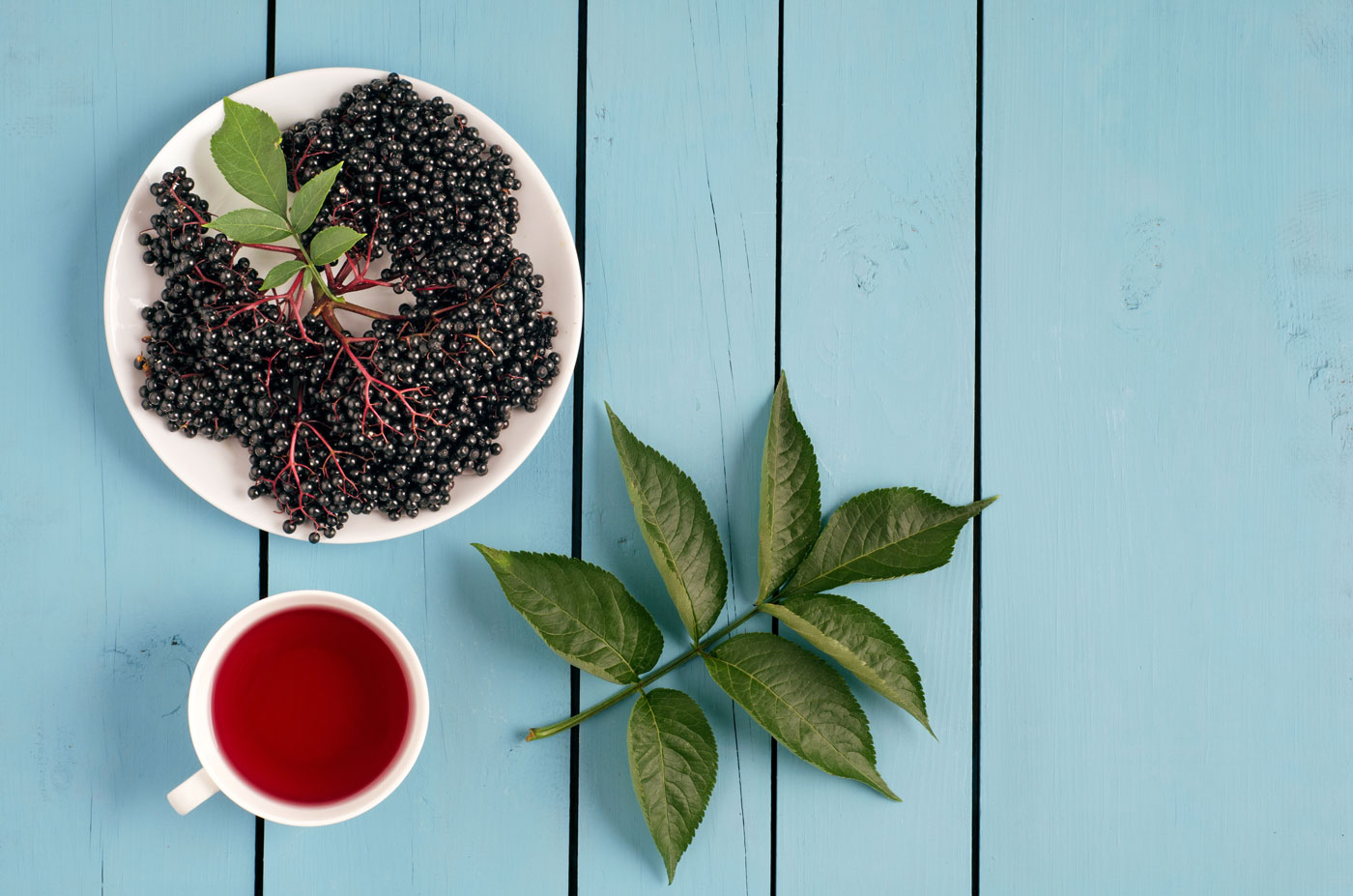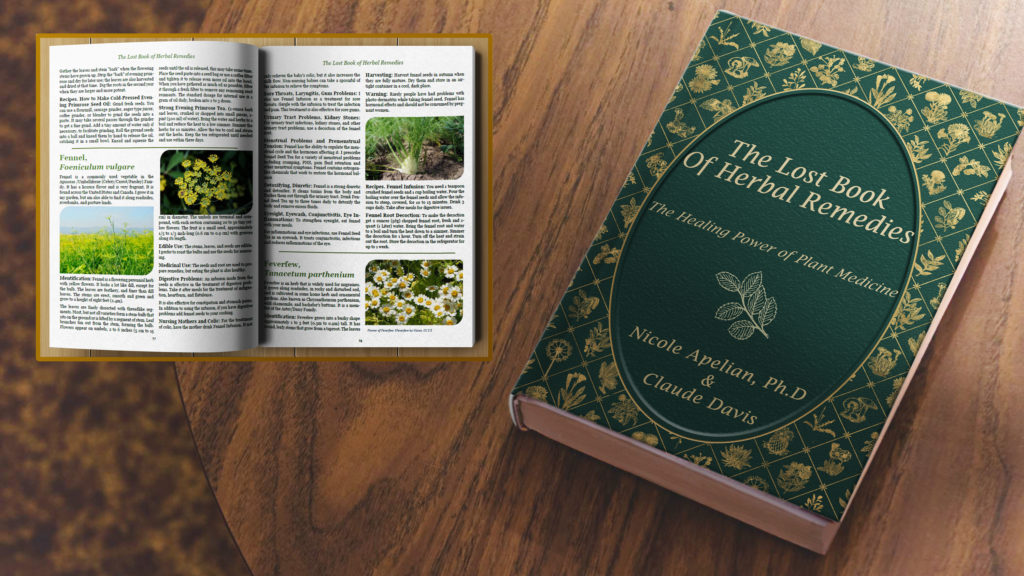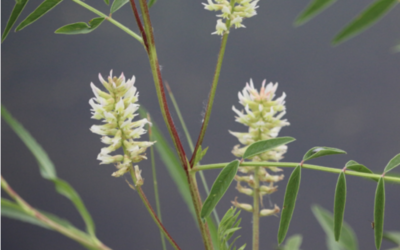Elderberry: One of the Most Important Herbs You Can Use During the Cold & Flu Season
Sambucus nigra (Blue or Black Elderberry) is one of my favorite antiviral herbal remedies to have on hand. I personally keep it with me 24/7 and take it whenever I travel or if I feel as though I’m becoming sick. Not only does this powerful botanical help to reduce the length and severity of illness, it also can help protect you from getting the flu in the first place. It’s safe for use by children and the ripe berries can be made into a tincture, syrup, wine, or cordial.
Basic Identification: Growing to approximately 12 feet (3 meters) tall, blue elderberry is a woody shrub with segmented stems that have a soft white pith. While young the bark is smooth, but as the wood ages the bark becomes brown with round lumps. The leaves are oblong with toothed edges. The blossom has a dense head of flowers, which range from white to cream in color. Radially symmetrical, the flowers have five flat petals and five stamens. The flower head can grow to a width of 6 to 12 (15 cm to 30 cm) inches across. The berries appear in clusters and are black or purplish-blue when ripe.
Important Differentiation: Do not confuse elderberry with the deadly poisonous water hemlock. Water hemlock is not woody, nor does it have bark. The primary stem is hollow, whereas Elderberry has a soft pith core. The stems of water hemlock often have streaks or blotches of purple. Older plants can be completely purple.
Where Does It Grow? Blue Elderberries grow throughout the North American Rocky Mountain region, while Black Elderberries are native to Europe and the Americas. Both have similar medicinal properties and may be used interchangeably.
Edible uses: While the Blue Elderberry variety is considered non-toxic when consumed raw, I always cook all varieties to avoid illness from eating the fresh berries. Harvest the berries during the early autumn when fully ripe. The flowers are edible when dried completely; do not use the flowers when fresh. Cooked fresh, ripe berries can be used to make syrup, wine, and cordials.
Medicinal Uses: The flowers, leaves, and cooked berries are all useful. I personally use elderberry tincture while traveling and during the cold and flu season as a preventative.
Here are my top 3 uses for Blue and Black Elderberry:
Anti-Viral, Colds and Influenza: If taken as a preventative, Blue Elderberry can reduce your chance of catching the flu. When used while sick with influenza, it lessens the duration and severity of the infection. In fact, Sambucus nigra is one of the most effective antiviral and immune-boosting botanicals you can use, which is supported by abundant research. It’s safe for children and I use it with my own kids as a tincture or syrup. The flowers are known to reduce inflammation, drain mucous, and encourage perspiration. Elderberry is exceptionally potent when combined with Yarrow to lower fevers.
Hemorrhoids, Sprains, and Bruises: Use chopped elderberry leaves applied as a poultice to the injured area or the leaves can be infused in an oil for external application. Never use elderberry leaves internally.
Soothes Eye Irritations and Conjunctivitis: As gentle eyewash, a tea made from elderberry flowers helps to calm eye irritations and conjunctivitis.
Recipe: Elderberry Syrup
With stems removed, place 1 cup fresh blue or black elderberries in a pot and cover with a small amount of water. Over low heat, cook for 2 hours. Puree or mash the berries to release the juice. Strain the pulp through several layers of cheesecloth. Squeeze thoroughly to extract all the juice.
Measure equal amounts of the juice and raw honey for a 1:1 ratio. Mix together and add ground cinnamon to taste, if desired. Pour the syrup into a clean canning jar and seal tightly.
Common Dosage: Use 1 to 2 teaspoons for adults, 1/2 to 1 teaspoon for children. Take once per day as a preventative for the flu and up to 3 to 4 times per day if fighting an infection.
Do you need a little extra help staying healthy this flu season?
Find Elderberry Tincture and Yarrow Tincture in my Apothecary, or try my Winter Defense Bundle, which includes these two tinctures plus 4 more herbal elixirs that I use during the Cold and Flu Season.
There are over 7 medicinal uses for elderberry in my book, The Lost Book of Herbal Remedies: The Healing Power of Plant Medicine. Detailed harvesting advice for this herb and many other easy to find plants are included. What’s more, it shows you how to make tinctures right in your own home. Nature truly provides!
Safety
Since all parts of the fresh plant are mildly toxic, it’s important to dehydrate or boil berries and dry flowers before use. Leaves and unripe berries are toxic. The bark and root cause vomiting and should not be used internally.
Nicole Apelian
Roll Up Your Sleeves and Do it Yourself?
Are you interested in making your own herbal remedies at home and learning about the many plants, lichens, and mushrooms you can find out your own back door? If so please pick up a copy of my book: "The Lost Book Of Herbal Remedies: The Healing Power of Plant Medicine" today!
Not in Europe or the US? Not a problem, click here to order your copy »





